In Florence, many art works are kept in "minor" museums or in particular religious environments, such as churches or basilicas, places that are far from mass tourism and allow free access.
Free entry is also allowed in other places: cenacles, pharmacies, gardens and cloisters, caskets of particular beauty that represent a valid alternative to the most famous museums of Florence.
In particular days of each month the entrance fee in some museums and state sites is free of charge. Make yourself a gift, booking a tourist visit in the historical center of Florence.
Every month you can get free entrances to the Italian National
museums which, usually, require the reservation and a ticket to
pay. Check the dates on this website.
You can also get a special opportunity: to visit one or more
art-sites (listed here below) which are always free entrance,
guided by a fully skilled private tourist guide.
The perfume-pharmaceutical workshop of S. Maria Novella or “Antica Spezieria”, which was part of the homonymous convent complex, in the heart of Florence city, is considered the oldest historical pharmacy of all of Europe. It was active for almost 4 centuries. The ancient "spezieria", today perfumery and herbal medicine, is located in a real monumental environment, with antique decorations and furnishings dating back to various eras. It also preserves a valuable collection of scientific material, as well as fine pharmacy vases (period from the 1600s to the 1900s). Free admission allow you to visit all the internal rooms.
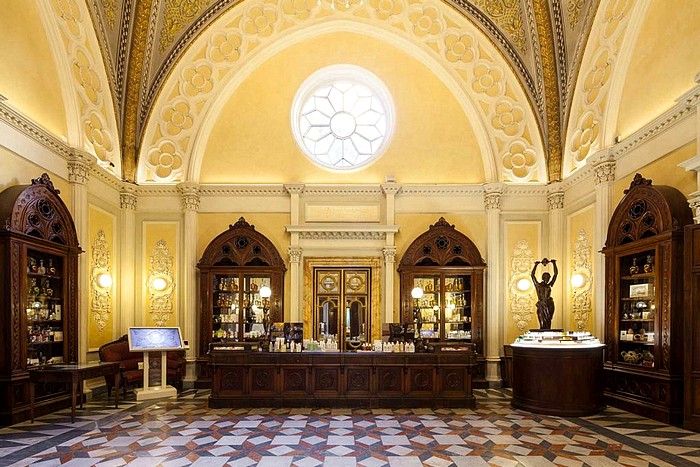
In past centuries, this church was also called "San Michele in Orto" and was originally a lodge built for the grain market. Later, the church was transformed into the seat of the Arts, the ancient Florentine guilds. Around the middle of the fourteenth century, places destined to be a grain storage and deposit were consecrated to Christian worship. The museum, located above the church, today houses works by the most famous Florentine artists from the fifteenth to the sixteenth century, which adorned the niches made outside, on the four sides of the imposing strong stone building. Free admission allows access to the church and museum.
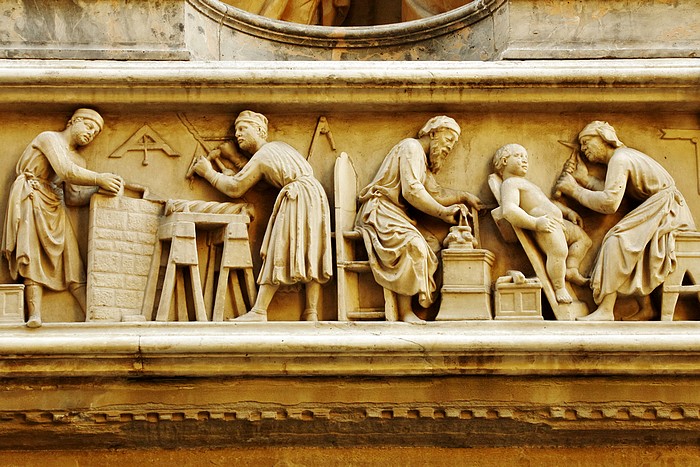
The villa is located in the first suburbian area of Florence city and it's open to the public only for special events, being the head-seat of the Accademia della Crusca(it's an Italian institution that brings together scholars and experts in linguistics and language philology of the italian language). But, what it's really interesting, it's the possibility to visit the gorgeous garden, rich in citrus and rare plants, roses and lilies, decorated with renaissance and ancient sculptures. The garden is considered the first “Renaissance garden” designed before Boboli. The Villa's garden is free of charge.
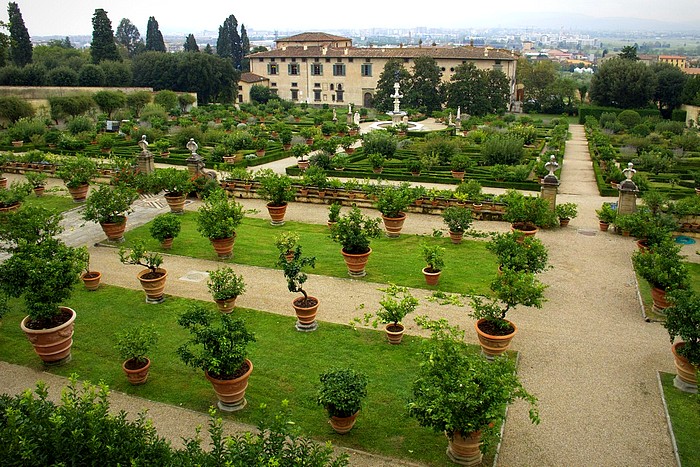
The Last Supper of Sant'Apollonia in Florence is only a small part of the rooms that once were used for the Benedictine convent. The Cenacle of Sant'Apollonia in Florence is only a small part of what was once used for the great convent of Sant'Apollonia, usually Benedictine. The special feature of the spacious dining hall is the large fresco by Andrea del Castagno, depicting the Last Supper, a widely used theme for those places where monks or nuns ate meals, painted between 1445 and 1450. The museum is easily accessible and can be visited with free admission.
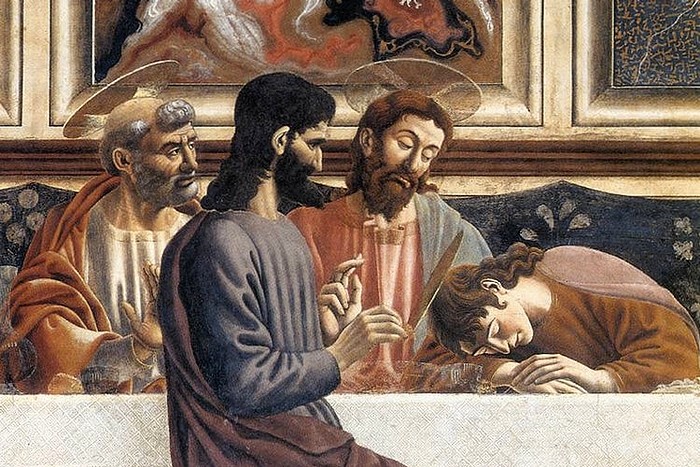
The enormous Florentine cathedral is among the most important architectural works of the period between the Gothic and the Renaissance and represents one of the largest European cathedrals. On behalf of the Signoria, the oligarchic government in force in the Middle Ages in Florence, it was begun in 1295 by the architect Arnolfo di Cambio replacing the ancient cathedral of Santa Reparata. The construction of the immense dome is the work of Brunelleschi, while the Campanile was designed by Giotto, created by Andrea Pisano and completed by Francesco Talenti. It's 85 meters high and entirely covered with white, green and rosy polychrome marble.
The Basilica of the Santissima Annunziata is the main Marian sanctuary of Florence, the mother house of the order of the servants. A primitive church was founded in 1250 by the "Seven Holy Founders" of the Order of the Servants of Mary. They were 7 Florentine nobles, who in about 1246, following an apparition of the Virgin, had retired to a hermitage at Monte Senario, in Mugello. The porch leads to a small atrium in the shape of a quadrilateral in front of the church, called the "Votive cloister", because there were exposed over the centuries votive squares and decorated wooden or plaster statues. The admission to the ecclesiastical places is free.
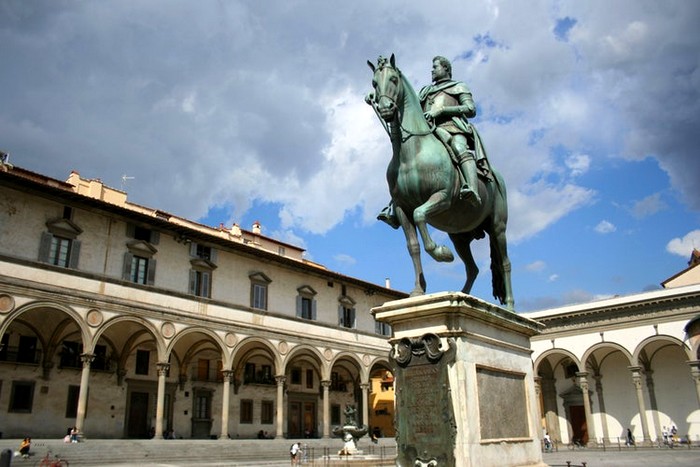
In the tradition of the cenacles depicted in the Florentine monasteries, the one of Andrea del Sarto is usually considered the highest point of arrival in a path started in the mid-fourteenth century. The most original part, which anticipates some theatrical inventions, is where the artist represents a terrace with architraved passages: two characters, against the backdrop of a sunset sky, witness the scene. The access to the museum sites is free.
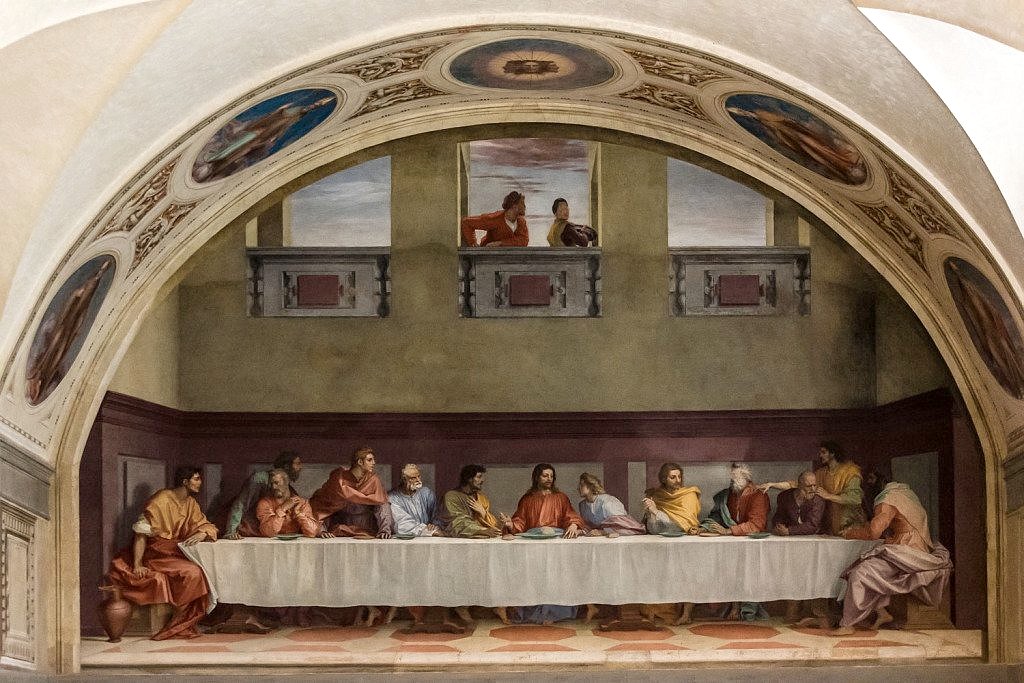
It is one of the main basilicas of Florence of the early Renaissance. It's settled in the Oltrarno district, with its bare and unmistakable façade, it dominates the homonym square, which is often also the site of typical local markets and small fairs. It is the last masterpiece designed by Filippo Brunelleschi which was heavily modified after his death. The famous architect saw only the beginning of the work whose commission was entrusted to him in 1434. Free admission to the basilica allows you to admire the wooden Crucifix, an early work by Michelangelo Buonarroti.
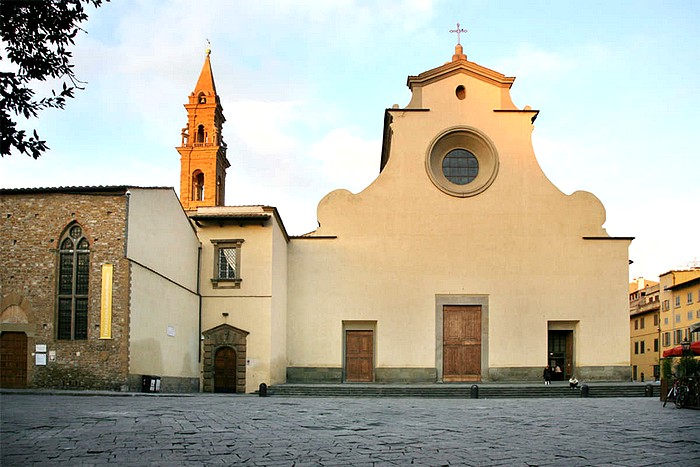
This is one of the sites that once were destined to the church of the “Society of the Disciplined of St. John the Baptist” in Florence, known as the “Scalzo”, because during the processions the Cross-bearer monk used to go barefoot. The architectural construction, simple and harmonious, was designed by Giuliano da Sangallo, while the walls were frescoed with the elegant technique of the monochrome, a “chiaroscuro” without colors realized in a masterly way by Andrea del Sarto and Franciabigio (only 2 scenes). It's free admission! I suggest you to admire the whole pictorial cycle, which is really unique among the most important frescoes of the florentine art of the early sixteenth century.
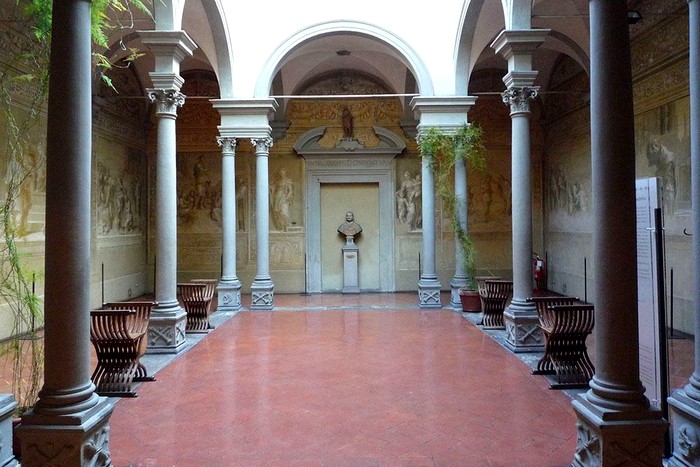
The church of Santa Trìnita is one of the most important places in the historical-artistic evolution of the city of Florence. In the place of the actually one there was an ancient church dedicated to Santa Maria dello Spasimo, built by the monastic order of the Vallombrosans, already documented in 1077. Still, there are some traces remain, some inscriptions and tombstones of primitive construction. These ancient remains are showed up on the counter-façade of the church. The church is famous for the commissions of wealthy families like Strozzi and the Sassetti, for which great artists worked and made their family names unforgettable. For the Strozzi Chapel (the current sacristy) worked Lorenzo Ghiberti and for the Sassetti, Domenico Ghirlandaio. I remind you that the visit to the sites and chapels of this church is always free.
An exclusive and customized walk in the "Flor-da-Lys" city